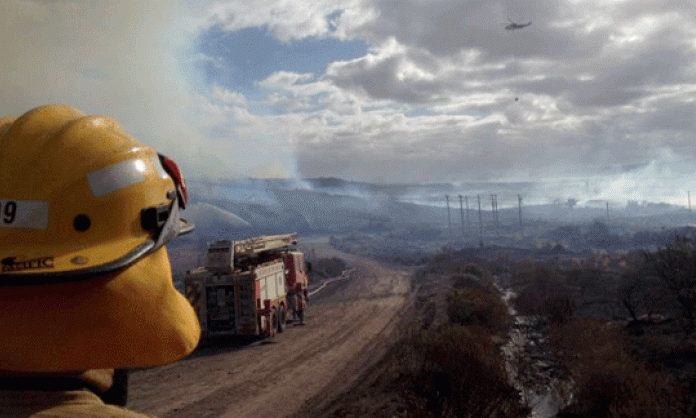The establishment consensus is that markets do everything better. Resource allocation, social welfare, wealth creation – you name it. Power generation is just one counter-example to such garbage.
In 1996, the Kennett government privatised the State Electricity Commission of Victoria. Kennett claimed that the commission was laden with debt and needed to be sold off. In fact, in its last year of operation it paid $995 million in interest, a $191 million dividend to the state government, and a profit of $207 million.
Kennett claimed that with the bloated state-run commission in private hands, the delivery of electricity would be better and cheaper. It’s worth remembering this when you open your next power bill.
From 1995 to 2012 the price of electricity increased 170 percent, according to research from the Australia Institute. Its 2013 report “Electricity and privatisation: What happened to those promises?” estimates that power prices increased at four times the rate of the consumer price index.
The report also found that the number of managers in the electricity sector has increased by 217 percent since 1997. Yet, over the same period, there has been an increase of just 28 percent in front line staff, such as technicians and trades workers.
The number of sales workers has increased from 1,000 to 6,000. “It seems remarkable that a sales force of 6,000 people is necessary to sell a product which everyone needs”, said David Richardson, who headed the report.
Those are the wonders of privatised electricity for you.
But the cost of the privatisation of power is not only being paid out of the public’s hip pocket; it’s also costing us our health and our environment. The thing the market excels at is disasters. Victoria’s Latrobe Valley is testament to that.
Fire in the Valley
The coal fire that has been burning in Morwell for more than a month is the worst in Australian history. It is nothing short of a national disaster – one that was totally preventable.
At a 2 March community meeting in Morwell, Luke Van Der Meulen, president of the Mining and Energy Division of the CFMEU, spoke of the recent history of disasters in the valley, including the 2007 Southern Batters fire in the Morwell mine.
“They had an inquiry after that. The simplest inquiry could’ve told them that what you need to do is get rid of the batters [the incline section of the mine wall]. Cover them over with dirt and you won’t have any more fires”, he said.
“That same year, in 2007, the Latrobe River burst its banks. The regulator let the Yallourn mine go far too close … and the batter collapsed and the Latrobe River collapsed into the mine …
“In 2011, we were without our Princes Freeway for how many months? Three? Five? In 2012, the river diversion that goes through the Yallourn mine collapsed. What happened there? Again, it was a regulator failure.
“Now, they’ve had inquiries about all of these and what comes from any of these inquiries? Zip. The same people come up with the same solutions, which is, the companies have to do nothing.”
You would think that this enterprise has been a complete disaster. But you’d be wrong. By the key measure that matters – profit – Hazelwood power station and the mines that feed it are enormously successful.
As Luke pointed out when speaking to Red Flag after the meeting, “At the end of the day, everyone in there [the town meeting] is talking about what Hazelwood should do. The only thing Hazelwood’s interested in doing is putting money in its shareholders’ pockets. That’s the only responsibility they’ve got. They got no responsibility to Morwell or the Latrobe Valley community.”
Hazelwood is owned by International Power, a London-based company that since 2012 has been wholly owned by GDF-Suez. GDF-Suez is the world’s largest energy utility company, with interests on every continent except Antarctica.
The Morwell fire took off in a disused section of the mine. In 1996, the Victorian government set the rehabilitation bond for the Hazelwood mine at $15 million. Rehabilitation bonds have been a requirement since the 1980s. Companies have to purchase them in advance of production. But the cost of a bond represents only a fraction of the rehabilitation cost.
So when GDF took over in 2010, it made the business decision not to properly rehabilitate the mine. The company calculated that it would be much cheaper to ignore it.
In fact, last year, in a response to a parliamentary inquiry into mineral exploration, the government argued that rehabilitation bonds were too much of an imposition on mining companies.
“The government understands that bonds can impose significant costs for some industry members during the early development phases of their projects and may prevent the commencement of mining and quarrying projects. The government will reduce the impost that the rehabilitation bond scheme places on some mining and quarrying projects to start up”, it said.
Governments everywhere rely on big business for investment and revenue. Even the threat to withdraw investment can be enormously persuasive. The most important thing for government is to help big business make money, not to provide services to the public.
Companies and government have no problems dumping their rubbish on communities like Morwell. It is one of the poorest towns in Australia. According to an Australian Bureau of Statistics report, Morwell ranks in the bottom 10 percent of socioeconomic advantage. Poor people are expendable. They are less likely to have the means to litigate.
When the fire broke out, GDF’s mine manager was on holiday in Queensland. That was a luxury most residents couldn’t afford. Instead they’ve been sending themselves broke trying to protect their families from toxic smoke.
Follow Kim on twitter @kim_doyle1








